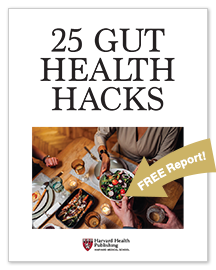
5 timeless habits for better health
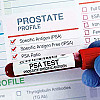
What are the symptoms of prostate cancer?

Is your breakfast cereal healthy?

When pain signals an emergency: Symptoms you should never ignore

Does exercise give you energy?
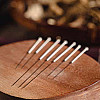
Acupuncture for pain relief: How it works and what to expect

How to avoid jet lag: Tips for staying alert when you travel
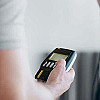
Biofeedback therapy: How it works and how it can help relieve pain
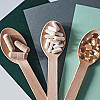
Best vitamins and minerals for energy

Should you take probiotics with antibiotics?
Medical Devices & Technology Archive
Articles
Mobile app reduces stress incontinence episodes in small trial
Women who used Tät, a smartphone app, did more pelvic floor exercises and had greater reductions in episodes of stress incontinence.
Monitoring your heart rhythm with a smartphone: A good call?
An app that detects an irregular heart rhythm could be reassuring for people worried about afib.
Image: Prykhodov /Thinkstock
Just over two years ago, the FDA approved the AliveCor Heart Monitor, which consists of a smartphone app plus a phone case with special sensors on the back. Touching the sensors with your fingers allows you to see a simple version of your heart's electrical activity on the phone screen. In the latest version, called Kardia, the sensors just need to be near (not necessarily on) your phone. The readout reveals if your heart rhythm looks normal or if you appear to have atrial fibrillation (afib)—a rapid, irregular heart rhythm that raises the risk of stroke.
Currently, several new smartphone apps to alert you about possible afib using just the phone itself—no special case required—are under development. Recent research suggests they're about as accurate as the Kardia system, although they haven't yet been cleared by the FDA and aren't on the market. If and when they are, could these apps help improve afib screening?
Bypass surgery after a stent?
After an artery-opening angioplasty plus a stent, a person may need bypass surgery in the future. Likewise, some people who have bypass surgery may later need a stent. Neither procedure stops atherosclerosis, the disease that clogs heart arteries.
FDA approves first absorbable stent
The FDA approved the first artery-opening stent made from a substance that biodegrades in about three years. The new stents appear to work as well as older metal stents, but blood clots may be more likely to form inside the absorbable stents.
What is a synthetic human genome?
A group of scientists wants to develop technology to create a synthetic human genome, which could lead to improved organ transplantation, vaccines and medicines, and to new ways to fight cancer and infections.
5 ways the Internet can help you boost your health
Use it as a source of health information, a tracking tool, a direct line to your doctor, and a link to loved ones.
Image: Purestock/Thinkstock
People who connect socially tend to have better health. The Internet can help you connect, even long distance.
A connection to the Internet is a powerful tool, linking you to just about all of the knowledge in the world. And you can use that tool to help improve your health. "Our research shows that many older adults aren't taking advantage of that. It's not for everyone, but it's a valuable resource, and I'm cautiously optimistic that it will make a difference for most people," says Dr. Kasisomayajula Viswanath, a professor of health communication at the Harvard T.H. Chan School of Public Health.
The new generation of wearable medical alert systems
Cheap, mid-priced, and Cadillac. Which one is for you?
Option one
This basic option usually includes a button you wear on a pendant or wristband, and a base unit (similar to a speaker-phone) that you plug into your house phone jack. If you get into trouble, you simply press your button, which signals the base unit to call the alert system operators. An operator then talks to you through the speaker in the base unit and sends paramedics if you need help. Most gadgets are waterproof and have built-in batteries that don't need recharging; most batteries last for years and will be replaced free of charge if they run out.
Typical price: $25–$30/month
Considerations: Just like a wireless house phone, these buttons can signal the base unit only within a limited range, such as 400 feet. But the buttons don't provide two-way communication with operators; only the base unit does that. So what happens if you're upstairs when you call for help, but the unit is downstairs? How will you hear the operator? Answer: you'll need another speaker, called a voice extender (that costs extra). And what if you're unable to press the button after a fall? Or what if you fall when you're away from home? You'll need upgrades to address those issues, such as fall detection or cellular technology, typically available in options two and three, below.
Option two
Option three
This premium option usually upgrades the button to a top-of-the-line device that looks like a mini cellphone, and actually uses cellular technology to contact emergency help. The improved communication allows you to use the alert system wherever you go, whether it's the grocery store or the great outdoors. Unlike the other options, this device has a built-in speaker, so you can talk to an operator through the button. It also features global positioning system technology (GPS), which gives alert system operators the ability to send help to your exact location.
Typical price: $40–$50/month
Considerations: This button is thicker and larger than the type worn only at home, so you probably won't be able to wear it comfortably on your wrist—you'll have to put it in your pocket or wear it around your neck. Also, it must be charged every few days, just like a cellphone. If you're not faithful about that, the button won't work.
Additional services
The fine print
It's not enough to find the latest and greatest alert system. You'll want to make sure that the company you choose has low activation fees, no long-term contracts, no cancellation fees, discounts for add-ons to your service, free replacement for equipment that's not working, and most important: operators who are available 24 hours a day at a UL-listed call center, which means the center meets requirements for backup systems in the event of failures, and is certified by safety testing company UL.
There are many alert system companies that meet all of those standards. Your choice may be swayed by recommendations from a friend, your doctor, or a local hospital. Just do your homework, and then give the system a try. You may soon wonder how you ever got along without it.
Could you use an alert system?An alert system is worth strong consideration if you live alone. But anyone at risk of falling could benefit from using one. The story of a Georgia couple's tragedy in January 2016 underscores the need: An 86-year-old man fell out of his motorized wheelchair outside their home, and shouted for his 74-year-old wife. She fell while trying to reach him, and both wound up on the ground overnight, with no way to call for help. The wife died in freezing temperatures; her husband was dressed warmly and survived. Think about how an alert system could help in your own living situation. What if, for example, you fell while a family member was in another part of the house, unable to hear you? What if you fell while your family member was out doing errands? What if you fell and were simply unable to shout for help? If you have an alert system, you'll save precious time and get treatment sooner. "I think these devices are a good thing, especially for people who don't have someone calling every day to be sure they are okay. Unfortunately, sometimes the very people who need them the most are the people who won't wear them," says geriatrician Dr. Suzanne Salamon, a Harvard Medical School assistant professor. |
A quick guide to medical alert system option levelsMake sure the company you choose has low activation fees, no long-term contracts, no cancellation fees, free equipment replacement, and operators available 24/7. | ||
Option one | Option two | Option three |
|
|
|
Too old for a stent?
Image: Thinkstock
Ask the Doctor
Q: I recently turned 86 and my angina is getting worse, even though I'm taking several different medications for it. Am I too old to have an angioplasty and a stent?
A: Not necessarily. During an angioplasty, a doctor threads a thin tube into a heart blood vessel and inserts a tiny mesh scaffold (called a stent) to keep the vessel open and restore blood flow. This can often improve chest pain, or angina. However, many studies of angioplasty haven't included large numbers of people over 80. That's primarily because older people tend to have more health problems than their younger counterparts, so including more elderly people in a study could skew the results.
Keeping the heart in the right rhythm
Implantable cardiac pacemakers help millions of people live longer and feel better.
Over the past several decades, permanent cardiac pacemakers have become a lifesaving staple of cardiovascular care. These tiny electronic devices consist of a miniature computer that is inserted under the skin of the chest. The unit sends impulses through wires (called leads) that stimulate the heart muscle to beat at regular intervals.
"There are many indications for getting a pacemaker, but nearly all involve correcting a slow heart rhythm or helping the heart to beat more efficiently," says Dr. Peter Zimetbaum, associate professor of medicine at Harvard Medical School. "In some situations, a pacemaker is needed in order to prevent death. In other cases, the device is used to improve overall heart function, which in turn also improves quality of life."
Sleep apnea solutions that lower cardiovascular risks
Image: Bigstock
Devices to treat nighttime breathing problems may help lower blood pressure and reduce the harm to your heart.
Peaceful slumber is often a pipe dream for people with obstructive sleep apnea. More than 25 million Americans have this problem, in which the tongue or throat tissue temporarily blocks the airway during sleep. The resulting pauses in breathing (called apneas) lead to explosive snoring or gasping for breath—sometimes more than 30 times per hour.

5 timeless habits for better health

What are the symptoms of prostate cancer?

Is your breakfast cereal healthy?

When pain signals an emergency: Symptoms you should never ignore

Does exercise give you energy?

Acupuncture for pain relief: How it works and what to expect

How to avoid jet lag: Tips for staying alert when you travel

Biofeedback therapy: How it works and how it can help relieve pain

Best vitamins and minerals for energy

Should you take probiotics with antibiotics?
Free Healthbeat Signup
Get the latest in health news delivered to your inbox!
Sign Up







